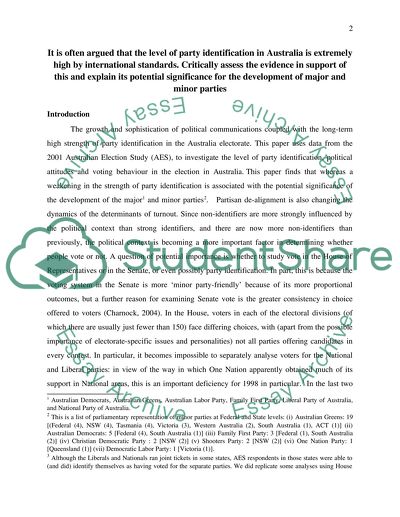Cite this document
(“Australian Election and Voting Behaviour Essay Example | Topics and Well Written Essays - 2250 words”, n.d.)
Retrieved from https://studentshare.org/miscellaneous/1503946-australian-election-and-voting-behaviour
Retrieved from https://studentshare.org/miscellaneous/1503946-australian-election-and-voting-behaviour
(Australian Election and Voting Behaviour Essay Example | Topics and Well Written Essays - 2250 Words)
https://studentshare.org/miscellaneous/1503946-australian-election-and-voting-behaviour.
https://studentshare.org/miscellaneous/1503946-australian-election-and-voting-behaviour.
“Australian Election and Voting Behaviour Essay Example | Topics and Well Written Essays - 2250 Words”, n.d. https://studentshare.org/miscellaneous/1503946-australian-election-and-voting-behaviour.


